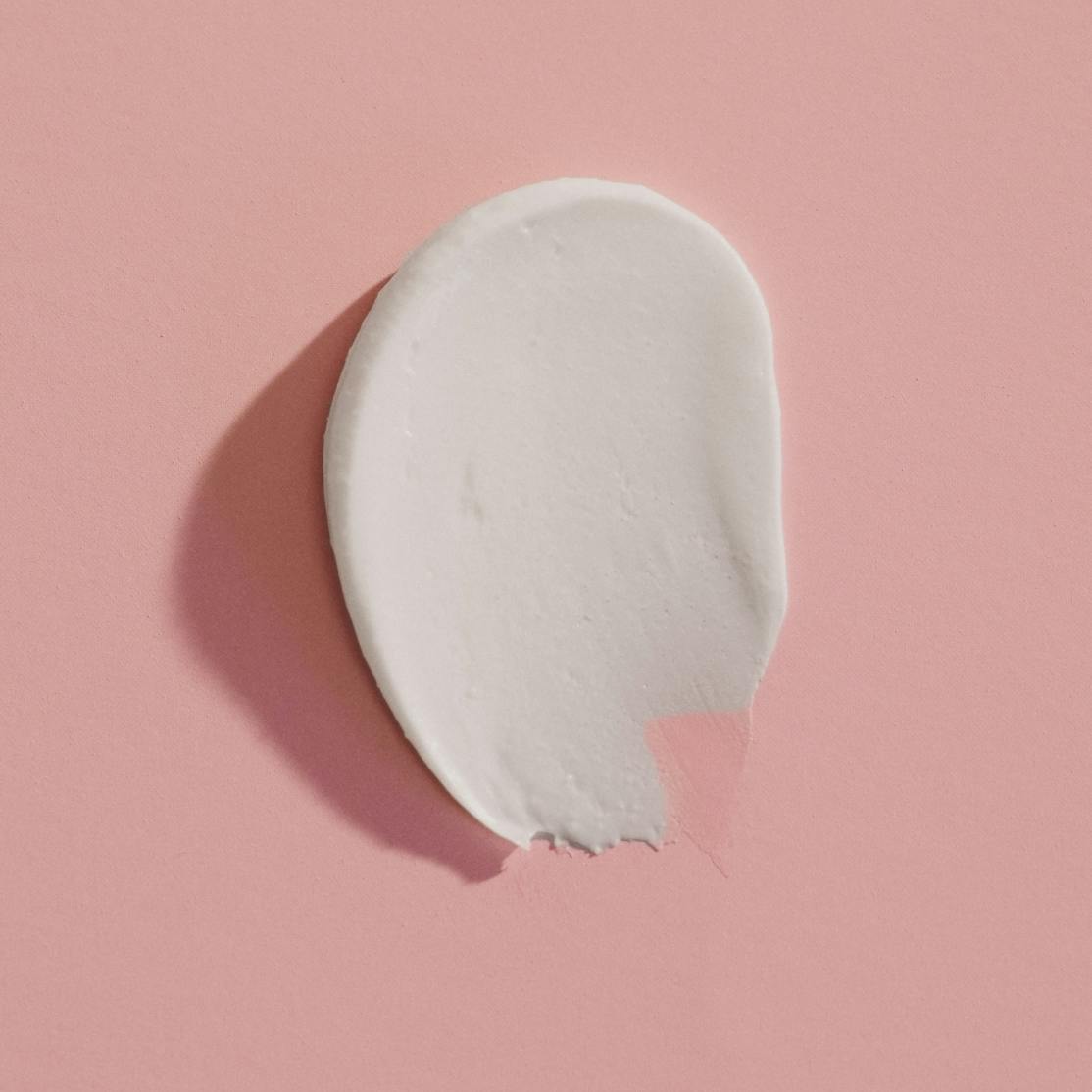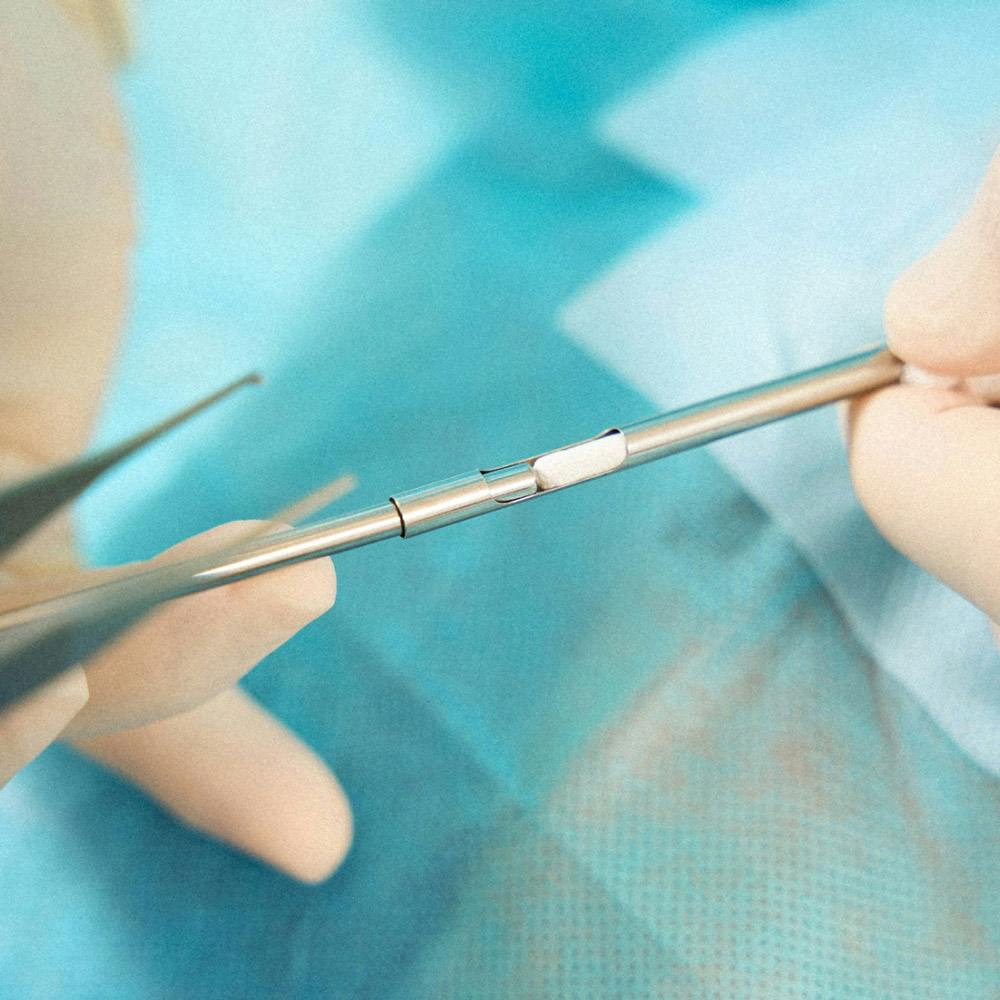Estrogen patches are a convenient and effective solution for many women experiencing menopausal symptoms. They provide several benefits, including reducing the risk of postmenopausal osteoporosis and heart disease, as well as potential cognition benefits. They’re easy and convenient to use, all while delivering a consistent release of hormones that can help you feel like you again. Ultimately, the decision to use estrogen patches or any form of hormone therapy should be made in consultation with a healthcare professional, like a Midi clinician, considering individual health factors and preferences.
When it comes to menopause, there’s some good news and some not-so-good news. While waving goodbye to your period no doubt feels liberating, all the other stuff that can come with this particular stretch of life, from hot flashes and mood swings to brain fog and sleep issues, aren’t exactly what we’d call a fun time. Now, for the good news: You don’t have to struggle through symptoms as the years go by. These days, there is a wide variety of science-backed options to treat menopause symptoms, including estrogen patches, that can work wonders for your body, mind, and mood.
Hormone replacement patches, also called estrogen patches, are one form of hormone replacement therapy (HRT) that has been proven to be effective at managing many of the more frustrating symptoms of menopause.
While there are several different types of HRT, you may hear about it as a pill or a patch first. “The decision to take an oral estrogen versus using a patch, or even a skin gel or spray, is not just about personal preference, insurance coverage and convenience, it’s also about safety,” says Lauren Streicher, MD, a clinical professor of obstetrics and gynecology at Northwestern University’s Feinberg School of Medicine and the founding medical director of the Northwestern Medicine Center for Sexual Medicine and Menopause. “It’s about potential risks and your personal medical history. And you should know those differences so you can participate in that decision.”
Read on to learn more about the benefits of estrogen patches for menopause.
What Is Hormone Replacement Therapy?
Hormone replacement therapy, sometimes referred to as menopausal hormone therapy or MHT, is a treatment used during perimenopause and menopause to replenish hormones, namely estrogen and progesterone, that naturally decline as your reproductive years wind down. The name is a bit misleading—you’re not replacing any hormones in your body as much as you’re supplementing them as they decline. HRT is the most effective treatment for managing menopause symptoms that result from the rapidly fluctuating changes in estrogen and progesterone.
What many women don’t realize is that we have estrogen receptors all over our bodies. So it’s not just wonky periods or breast changes we’re contending with. There are estrogen receptors in our brains and bones as well as our skin and hair. That’s what can make estrogen withdrawal so frustrating—as our levels rise and fall unpredictably, we’re met with a confounding array of symptoms that deserve our attention.
Enter HRT. It works by releasing estrogen into the bloodstream or vaginal tissue, and is available in many forms, including:
- Pills
- Patches
- Vaginal rings
- Topical creams and gels
- Pellets
Unless you’ve had a hysterectomy, clinicians add progesterone or progestin to estrogen. This is necessary because, while estrogen is effective in alleviating symptoms, it can also thicken the uterine lining (which is called endometrial hyperplasia), increasing the risk of uterine cancer. Adding progesterone to HRT for any patient with a uterus is key because it controls thickening and sends the risk for developing uterine cancer back to baseline. For those without a uterus, certain forms of progesterone may still be recommended to help improve symptoms like sleep issues and night sweats.

Tune in to Midi’s "AMA (Ask Me Anything) on HRT, Estrogen, Testosterone, and Progesterone" webinar to get answers to common HRT questions, including top patch questions.
How Estrogen Patches Help Provide Menopause Relief
Hormone replacement patches, sometimes called estradiol patches or HRT patches, are thin, adhesive patches applied to the skin. They can contain only estrogen (estradiol) or a mix of estrogen and progestin (norethindrone). HRT patches are one of the most commonly prescribed first-line therapies for many women beginning HRT for menopause because they may have milder side effects than you might experience with other delivery methods, like estrogen pills.
Estrogen patches are a form of transdermal (which literally means “through the skin”) hormone therapy—the patch is placed on the lower abdomen or upper buttock area, and delivers hormones through the skin and into the bloodstream at a consistent level.
Types of HRT Patches
There are two main types of menopause patches:
- Estrogen patch, also called estradiol (a form of estrogen)
- Estrogen and progestin (a synthetic form of progesterone) combination patch
HRT patches come in a variety of doses and are usually applied once or twice a week, depending on your treatment plan. Place your patch on your lower abdomen on clean, dry skin (no powder or lotion, please). When it’s time to change your patch, move it to another spot in the same general area for best absorption. Do not place a patch in the same exact location for at least a week.
Some patches can be applied to the upper buttocks (check the package insert to see if this is true for the patch you’re using). But once you’ve chosen an area of the body to use for your patch—either the lower abdomen or the butt—stick with that area for consistent absorption.
Estrogen Patches vs. Estrogen Pills
“Most of the oral, and all of the transdermal estrogens have the exact same form of estrogen—a plant derived, bioidentical beta estradiol,” says Dr. Streicher. “The differences between the two comes down to how your body metabolizes the estrogen, which is determined by if it is absorbed through the skin as opposed to making the trip through your gastrointestinal system.”
Oral estrogens travel through the stomach, into the intestines, and then get metabolized by the liver. Transdermal estrogens, on the other hand, get absorbed through the skin when applied to your thigh or arm and then are released directly into the bloodstream. They are not metabolized by the liver. That trip through the liver is what results in risk factors that are unique to oral estrogen.
Risks that are specific to oral estrogen products, that do not occur in transdermal estrogen, according to Dr. Streicher, include:
- An Increase in gallstones
- An Increase in inflammatory markers associated with heart disease
- An Increase in triglyceride levels, which in turn increases the risk of blood clots including:
- Stroke
- Pulmonary embolism
- Deep vein thrombosis (DVT)
But this information isn’t intended to scare you off pills. “Most low-risk women do just fine taking pills,” says Dr. Streicher. “The risk of developing a blood clot when taking postmenopausal estrogen is really small—and much smaller than if someone is taking birth control pills, which most women don’t hesitate to do.”
8 Benefits of the Estrogen Patches

HRT patches offer several advantages over other forms of hormone therapy. Here’s how they may benefit you:
- Lower disease risk than pills: As mentioned above, one of the main advantages of estrogen patches over oral HRT is that they bypass the gastrointestinal tract. Oral medications must pass through the digestive system and liver before entering the bloodstream, which can lead to fluctuations in hormone levels and increased risk of liver-related side effects, like gallbladder disease. Transdermal patches deliver hormones directly into the bloodstream, providing more stable hormone levels and reducing the strain on the liver. One study found that transdermal hormone therapy is associated with a lower risk for gallbladder disease than hormone therapy pills.
- Fewer side effects: All forms of HRT (and any prescription medication for that matter) come with side effects, but one of the benefits of using estrogen patches (and its direct-to-bloodstream delivery method) is the ability to use lower doses of estrogen while still achieving symptom relief. Patches are able to be prescribed at lower doses because estrogen is better absorbed in the process so a higher percentage ends up in your bloodstream than with pills, which have to be broken down and digested. The steady, controlled release of estrogen through the skin minimizes fluctuations in hormone levels, which can reduce the risk of side effects such as bloating, breast tenderness, and mood swings. Lower doses also decrease the risk of more serious complications including high blood pressure and stroke.
- Easy dosing options: Patches are available in various dosages, allowing for individualized treatment plans that can be adjusted as needed to find the optimal dose for symptom relief with the guidance of a healthcare provider. And you can wean off them quickly if you’re having side effects. See our handy estradiol patch dosage chart below, including dosages for other forms of hormone therapy so you can see how they all stack up.

- Reduced clotting risk: Compared to HRT pills, patches are less likely to lead to blood clots. “Oral drugs increase the risk of blood clots much more so than patches,” says Midi's Chief Clinical Officer, Mindy Goldman, MD, a practicing OB/GYN at the University of California, San Francisco (UCSF) for almost three decades. As a result, they’re often the first choice for women with cardiovascular risk factors, such as deep vein thrombosis (DVT) and a history of hypercholesterolemia, hypertension, or diabetes. Patches are also a good option if you start HRT after 60 to avoid the same risk factors that increase with age. One study that followed 54,000 women, ages 35 and older, found that those who used estrogen patches were 30 percent less likely to develop blood clots in their legs or lungs since the drug delivery bypasses the liver.”
- Improved libido: Estrogen is the main hormone responsible for maintaining vaginal blood flow and lubrication, and keeping your vaginal walls elastic. It’s also directly linked to sex drive. When estrogen levels drop, tissue in both the vagina and the vulva becomes thinner, dryer, weaker, and prone to irritation. HRT patches can help: One study found that women on the patch reported a greater improvement in sexual function compared to women on HRT pills.
- Better bone health: One of the significant benefits of estrogen therapy, including estrogen patches, is the reduction in the risk of postmenopausal osteoporosis. Osteoporosis is a condition characterized by weakened bones, making them more susceptible to fractures. Estrogen plays a crucial role in maintaining bone density, and its decline during menopause can lead to bone loss. By providing a steady supply of estrogen, patches help maintain bone density and reduce the likelihood of osteoporosis-related fractures. Another perk of patches: There are low-dose HRT patches that are prescribed specifically for treatment of osteoporosis.
- Greater potential Alzheimer’s protection: Recent research suggests that HRT patches can improve brain function. One report, based on findings from the Kronos Early Estrogen Prevention Study (KEEPS), found that women who used the estrogen patch maintained the most brain volume in the parts of the brain responsible for memory and reasoning compared to placebo.
- Convenience: Estrogen patches are an appealing set-it-and-forget option for many busy women. Unlike oral medications, which need to be taken daily, most estrogen patches are applied once or twice a week, depending on the product. This reduces the likelihood of missed doses.
Side Effects of HRT Patches
All forms of HRT can come with some side effects. While using patches, some women may experience:
- Skin irritation
- Breast tenderness
- Headaches
- Vaginal discharge
- Nausea
- Back pain
Frequently Asked Questions About HRT Patches
What if my patch irritates my skin?
Skin irritation can happen due to the adhesive used in patches. Let your healthcare professional know if you’re noticing skin changes or discomfort. One simple way to combat this is to apply a small amount of 1% hydrocortisone cream where you plan to put your patch. Let the cream absorb completely before placing your patch so it doesn’t slide off.
Can exercise, like swimming, make my HRT patch fall off?
It’s possible your HRT patch could fall off, but transdermal patches are made to withstand these types of activities. It’s perfectly okay to swim, sweat, shower, go in a sauna or jacuzzi while wearing a transdermal patch. However, if you exercise frequently, check your patch every day to be sure it hasn’t fallen off. If it has, you can replace it in the same area with a new one.
What happens if my HRT patch falls off?
It’s a common worry, but you don’t need to stress. You can try re-sticking it or wait to apply a new one when it’s time for your next patch. Midi’s Chief Brand Officer and patch user, Jill Herzig, explains why there's no reason to panic:
Need more tips on getting your patch to stay put? Board-certified OB/GYN Mary Claire Haver, MD, a fellow of the American Congress of Obstetricians and Gynecologists (FACOG) and author of the bestselling book The New Menopause, shares her best advice:
Is there a difference between generic and brand name HRT patches?
Nope, there’s no major difference between a brand name patch and a generic one, though some patients report differences in the adhesive used. The biggest difference you’ll see is with cost. Patches can range in cost from less than $40 per pack to more than $250, depending on the brand and dosage. That said, if you do notice issues, talk to your healthcare team about switching to a different brand or trying a different dose to see if that provides better relief.
What happens if I miss a patch change?
It happens! And unlike birth control pills, missing a single swap isn’t a big deal. Just swap it out as soon as you remember and return to your usual schedule. You might experience a temporary uptick in symptoms (sometimes as soon as one day after a missed dose), but you should normalize quickly once you’re back on track.
Are estrogen patches safe?
Estrogen patches are generally considered safe for most women when used as directed. The transdermal delivery method offers several safety advantages, including a lower risk of blood clots compared to oral estrogen. However, like all medications, estrogen patches are not without risks, and they should be used under the guidance of a healthcare professional.
How Women Feel on Estrogen Patches
The Takeaway
- Hormone replacement patches, also called estrogen patches, are one form of hormone replacement therapy (HRT) that has been proven to be effective at managing many of the frustrating symptoms of menopause, including hot flashes, night sweats, mood changes, brain fog, and more.
- The estrogen patch is a form of transdermal hormone therapy, meaning that it delivers hormones through the skin and into the bloodstream at a consistent level when placed on the lower abdomen or upper buttock area.
- Research shows that HRT patches may come with fewer side effects and greater relief (at lower doses) compared to HRT pills.
If you’re in perimenopause or menopause and want guidance from clinicians who specialize in women’s midlife health, book a virtual visit with Midi today.
Hormonal change is at the root of dozens of symptoms women experience in the years before and after their period stops.
Our trained menopause specialists can help you connect the dots to guide you towards safe, effective solutions.
Whether you need personalized guidance or a prescription routine to tackle symptoms—including brain fog, hot flashes, sleep trouble, mood swings, and weight gain—we’ve got you covered. Learn more here.
Midi’s mission is to revolutionize healthcare for women at midlife, wherever they live and whatever their health story. We believe that starts with education, to help all of us understand our always-changing bodies and health needs. Our core values guide everything we do, including standards that ensure the quality and trustworthiness of our content and editorial processes. We’re committed to providing information that is up-to-date, accurate, and relies on evidence-based research and peer-reviewed journals. For more details on our editorial process, see here.
 Jihan Myers
Jihan Myers




